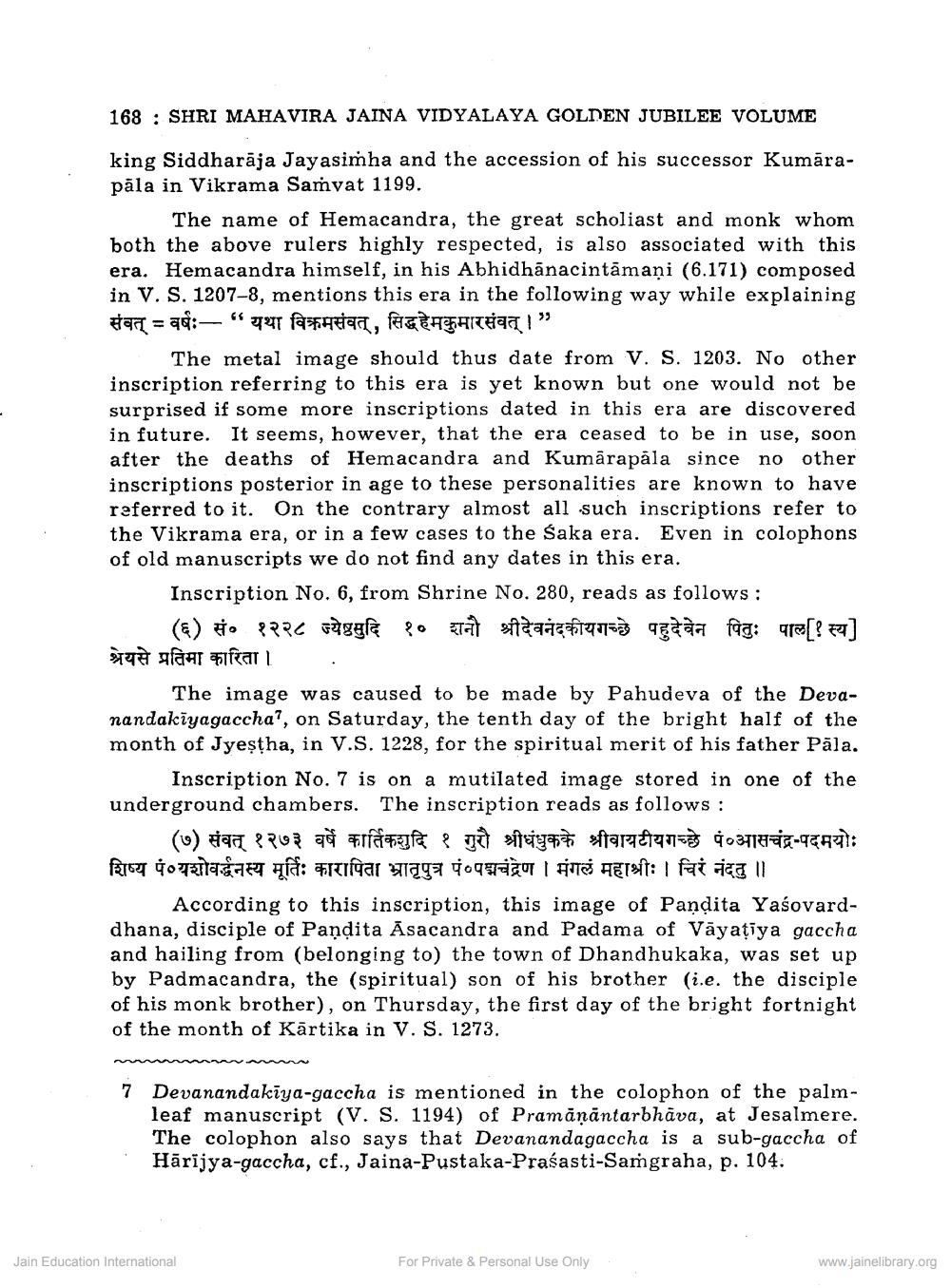________________
168 SHRI MAHAVIRA JAINA VIDYALAYA GOLDEN JUBILEE VOLUME
king Siddharāja Jayasimha and the accession of his successor Kumārapala in Vikrama Samvat 1199.
The name of Hemacandra, the great scholiast and monk whom both the above rulers highly respected, is also associated with this era. Hemacandra himself, in his Abhidhānacintamani (6.171) composed in V. S. 1207-8, mentions this era in the following way while explaining संवत् = वर्षः - यथा विक्रमसंवत् सिद्धहेमकुमार संवत् । "
Ef
The metal image should thus date from V. S. 1203. No other inscription referring to this era is yet known but one would not be surprised if some more inscriptions dated in this era are discovered. in future. It seems, however, that the era ceased to be in use, soon after the deaths of Hemacandra and Kumārapāla since no other inscriptions posterior in age to these personalities are known to have referred to it. On the contrary almost all such inscriptions refer to the Vikrama era, or in a few cases to the Saka era. Even in colophons of old manuscripts we do not find any dates in this era.
Inscription No. 6, from Shrine No. 280, reads as follows:
?
(६) सं० १२२८ ज्येष्ठमुदि १० शनो श्रीदेवनंदकीयगच्छे पहुदेवेन पितुः पाल [ १ स्य ] श्रेयसे प्रतिमा कारिता ।
The image was caused to be made by Pahudeva of the Devanandakiyagaccha, on Saturday, the tenth day of the bright half of the month of Jyestha, in V.S. 1228, for the spiritual merit of his father Pāla.
Inscription No. 7 is on a mutilated image stored in one of the underground chambers. The inscription reads as follows:
(७) संवत् १२७३ वर्षे कार्तिकशुदि १ गुरौ श्रीधंधुकके श्रीवायटीयगच्छे पं० आसचंद्र पदमयोः शिष्य पं० यशोवर्द्धनस्य मूर्तिः कारापिता भ्रातृपुत्र पं०पद्मचंद्रेण । मंगलं महाश्रीः । चिरं नंदतु ॥
According to this inscription, this image of Pandita Yasovarddhana, disciple of Pandita Asacandra and Padama of Vayaṭiya gaccha and hailing from (belonging to) the town of Dhandhukaka, was set up by Padmacandra, the (spiritual) son of his brother (i.e. the disciple of his monk brother), on Thursday, the first day of the bright fortnight of the month of Kartika in V. S. 1273.
7 Devanandakiya-gaccha is mentioned in the colophon of the palmleaf manuscript (V. S. 1194) of Pramāṇāntarbhāva, at Jesalmere. The colophon also says that Devanandagaccha is a sub-gaccha of Hārījya-gaccha, cf., Jaina-Pustaka-Prasasti-Samgraha, p. 104.
Jain Education International
For Private & Personal Use Only
www.jainelibrary.org




